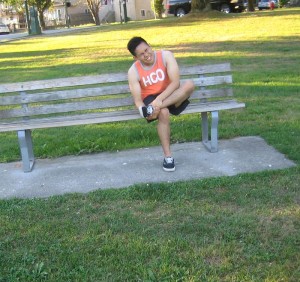Gout is a form of arthritis that causes sore flare-ups on the big toe. It is important to note that the condition progresses through 4 phases – silent accumulation of uric acid in the blood to a chronic case of arthritis.
Asymptomatic gout – stage 1
Gout develops once uric acid accumulates in the blood. Take note that uric acid naturally forms when the body breaks down purines.
Generally, uric acid is dissolved in the blood, filtered by the kidneys and eliminated via urine. Among those with gout, this process is disrupted. This occurs when eating large-amounts of purine-rich foods including dried beans, liver, peas and mushrooms. In some cases, the kidneys could not eliminate enough uric acid from the body.

During the initial phases, the uric acid builds up in the blood causing hyperuricemia. There are no symptoms at this phase and treatment is not needed but the uric acid is already causing damage to the body.
Acute – stage 2
Over time, the excess uric acid forms into crystals that gather in the spaces within the joints. These crystals are responsible for causing pain in the big toe. It can also affect other joints including the feet, ankles, wrist and knees.
Acute flare-ups can occur abruptly, usually at night and lasts for days up to weeks. Aside from the pain, other symptoms include swelling, redness and warmth.
Interval – stage 3
Gout becomes dormant between the episodes. There is a phase free from pain after a flare-up that can last for months or even years.
Nevertheless, the uric acid will continue to accumulate in the bloodstream and joint spaces. Regular check-ups with a doctor and following the recommended instructions is vital.
Chronic tophaceous gout – stage 4
This is the debilitating form that takes a long time to develop, usually up to 10 years. It is the result if the condition is left untreated.
In case the gout is chronic, the individual continuously experiences symptoms strikingly resembling the other forms of arthritis including sore, aching joints. Additionally, nodules of uric acid in the soft tissue forms around the joints. These are called as tophi and commonly develop on the elbows, fingers and toes.
The uric acid can impair the bones and accumulate in the kidneys which results to kidney stones.
